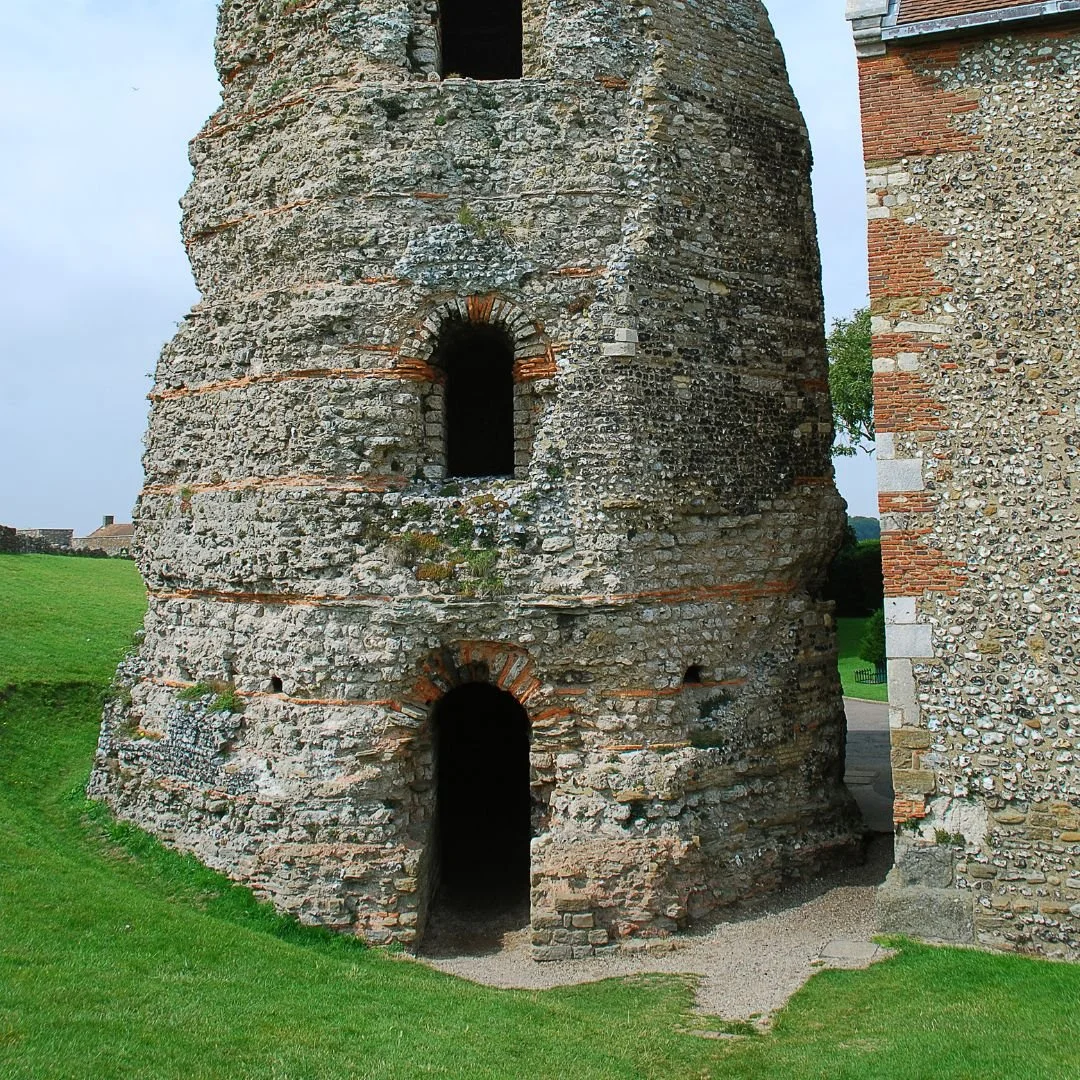The Roman Lighthouse, Dover: England’s oldest surviving lighthouse
This Roman Lighthouse in Dover is the oldest surviving lighthouse in England.
It’s also one of three surviving Roman lighthouses in the world - the others are at Leptis Magna in Libya and La Coruña in Spain.
The remarkable structure was built to guide ships into the Roman port town of Dubris, now Dover, a town and major ferry port in Kent.
The Roman Lighthouse, also known as the Dover Pharos, was constructed around the 1st century AD during the Roman occupation of Britain.
It was a vital maritime structure guiding ships through the treacherous waters of the English Channel.
Historians believe that it was part of a larger fortification system devised by the Romans to safeguard their territories and facilitate trade routes across the seas.
Made of alternating bands of square tufa stone and red tiles, this cylindrical tower originally stood at an impressive height of around 24 meters (80 feet).
However, only a fraction of its original structure remains today, but it’s still an impressive sight!
Its strategic location in the grounds of Dover Castle suggests its role in communicating and navigating maritime traffic along the coastline.
The architectural design of the Roman Lighthouse showcases the Romans' advanced engineering techniques.
Its sturdy construction and durable materials allowed it to endure centuries of wear and tear, surviving tumultuous periods of history and natural elements.
Beyond its practical function, the Dover Pharos symbolises the cultural exchange between the Roman Empire and Britannia.
It stands as a tangible reminder of the Roman influence on Britain's landscape and infrastructure, leaving an indelible mark on the region's history.
The Roman Lighthouse has been repaired and reconstructed over the centuries with the uppermost masonry being mostly medieval.
The Lighthouse now sits in the grounds of Dover Castle which was founded in the 11th century, directly alongside the late Anglo-Saxon church of St Mary-in-Castro, which is itself constructed from Roman building materials, built in 1000 AD.
The working church was partly rebuilt in the medieval era, and was restored by the Victorians after many years of neglect.
Rising above the famous White Cliffs high above the Channel, Dover Castle is an icon of England.
Built soon after 1066, this mighty fortress has been the site of royal intrigue and epic sieges, and was at the centre of the crucial effort to evacuate hundreds of thousands of Allied troops from the beach of Dunkirk.
If you’re visiting Dover Castle, head underground and explore the darkly atmospheric Secret Wartime Tunnels that bury deep into the iconic white cliffs of Dover.
Vivid recreations tell the story of the Dunkirk evacuation, complete with dramatic projections of swooping Spitfires and real film footage.
Today, the Roman Lighthouse is only a four-storey building at 19 metres high, with the top floor section being a medieval restoration.
After nearly 2,000 years the original Roman stonework on the seaward-side is inevitably weather-worn and crumbly, though the top medieval section is still in a reasonable state of repair.
It’s now Grade I listed.
The Roman Lighthouse is located at the south-eastern side of Dover, along Mortimer Road on the promontory called Eastern Heights and in the grounds of Dover Castle, a 12th century Norman strong-hold.
The link with Julius Caesar
Julius Caesar was a Roman statesman, general, and notable figure in ancient history.
During his initial attempt to conquer Britain in 55 BC, Julius Caesar sought to land at Dubris (Dover), a natural harbour likely pinpointed by Volusenus as a suitable spot.
However, upon approaching the shore, the amassed Briton forces stationed on the nearby hills and White Cliffs of Dover deterred him, as the cliffs were dangerously close, enabling javelins to be hurled down onto any potential invaders.
After anchoring there until the ninth hour, awaiting supply ships from a second port and conducting a council of war, Caesar directed his subordinates to take independent action.
Subsequently, he sailed the fleet about seven miles along the coast to find an open beach for landing.
The historic lighthouse has raving reviews on TripAdvisor.
A recent review said: “This is an absolute must-see on the grounds of Dover Castle. It is right next to the Anglo-Saxon Church (from a distance, it looks part of the church, so take note, it’s that close).
”In the church, we learned from an employee two interesting facts. One, the lighthouse is believed to be the oldest Roman structure in England. Two, it is dated as far back as 45 CE. That’s during the reign of Claudius.”
If you’re planning a visit to this iconic structure, don’t forget to visit the nearby White Cliffs of Dover (pictured below).
These high chalk cliffs look out onto the English Channel, giving far-reaching views towards the French coast.
The best way to see the cliffs is to take a walk along the coastal path towards South Foreland Lighthouse.
You’ll get a great view of the cliffs and also see the chalk grassland that’s home to so many unusual plants and insects like the chalkhill blue butterfly and the pyramidal orchid.
The cliffs also have a special place in our national history and they were used for defence in both World Wars.
You can see reminders of this past at Fan Bay Deep Shelter a complex of Second World War tunnels hidden within the chalk.
If you enjoyed this blog post, please follow Exploring GB on Facebook for daily travel content and inspiration.
Don’t forget to check out our latest blog posts below!
Thank you for supporting Exploring GB.












